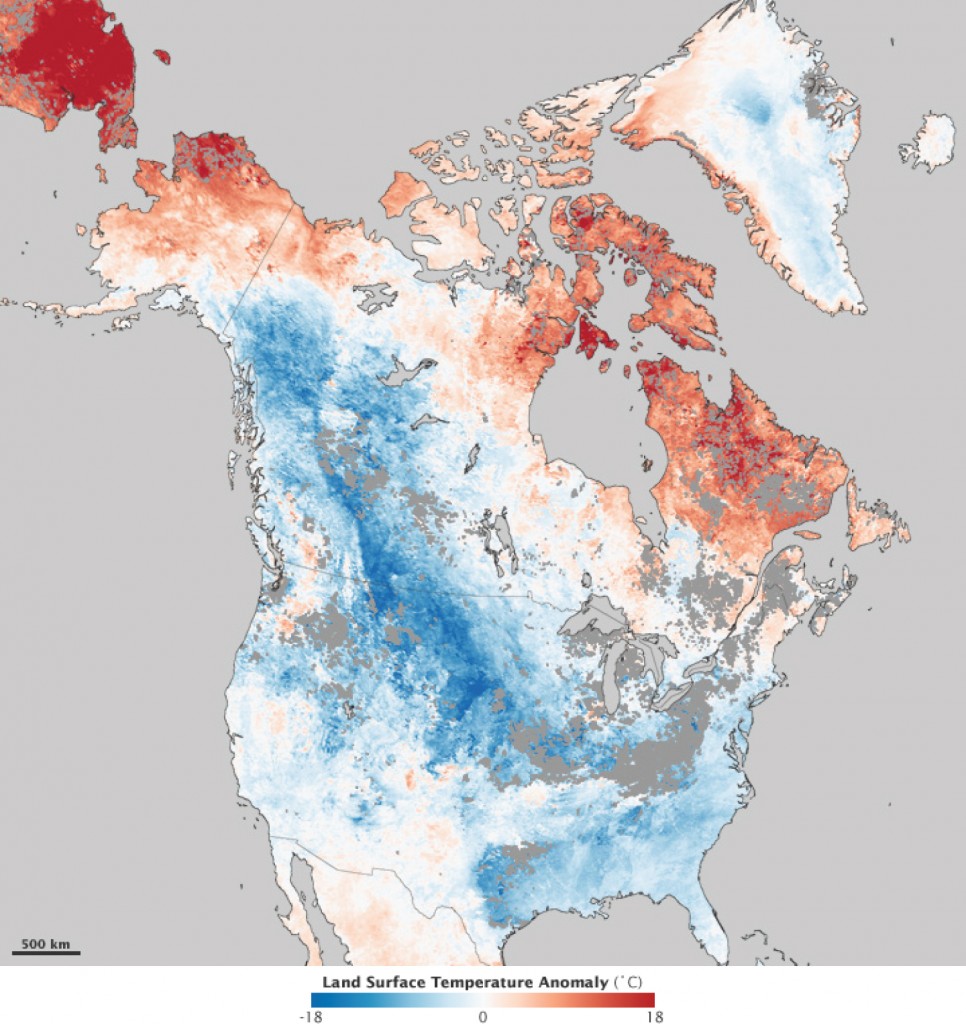While the US has seen an unusually cold winter so far (with several large snowstorms battering New England as well as sweeping across the nation), you may wonder whether the Arctic is also experiencing anomalously cold temperatures. Here in Worcester, Massachusetts, we happen to be digging out of 48.4 inches of snow received in January alone (the second snowiest January on record), but I can’t help wonder how our northern neighbors are faring. Based on land surface temperatures observed by the Moderate Resolution Imaging Spectroradiometer (MODIS) on NASA’s Aqua satellite, you may be surprised by the January temperature anomalies across North America and Siberia:

It turns out we’re likely feeling the impacts of the the “Arctic Oscillation” (or AO), which describes a large-scale pattern of climate variability. A positive AO means that the air pressure gradient between the Arctic and mid-latitudes is relatively high (resulting in cold air masses being constrained to Arctic latitudes). A negative AO means that the air pressure gradient between the Arctic and mid-latitudes is relatively low (resulting in cold Arctic temperatures leaking south and warm mid-latitude temperatures leaking north). Thus, although our current negative phase of the AO during winter 2010-2011 may be causing the US to shiver, the Arctic has been staying relatively toasty. So while you’re faced with more cold temperatures and digging out of the next storm this winter (ours will be here tomorrow already!), you can thank the Arctic Oscillation.



